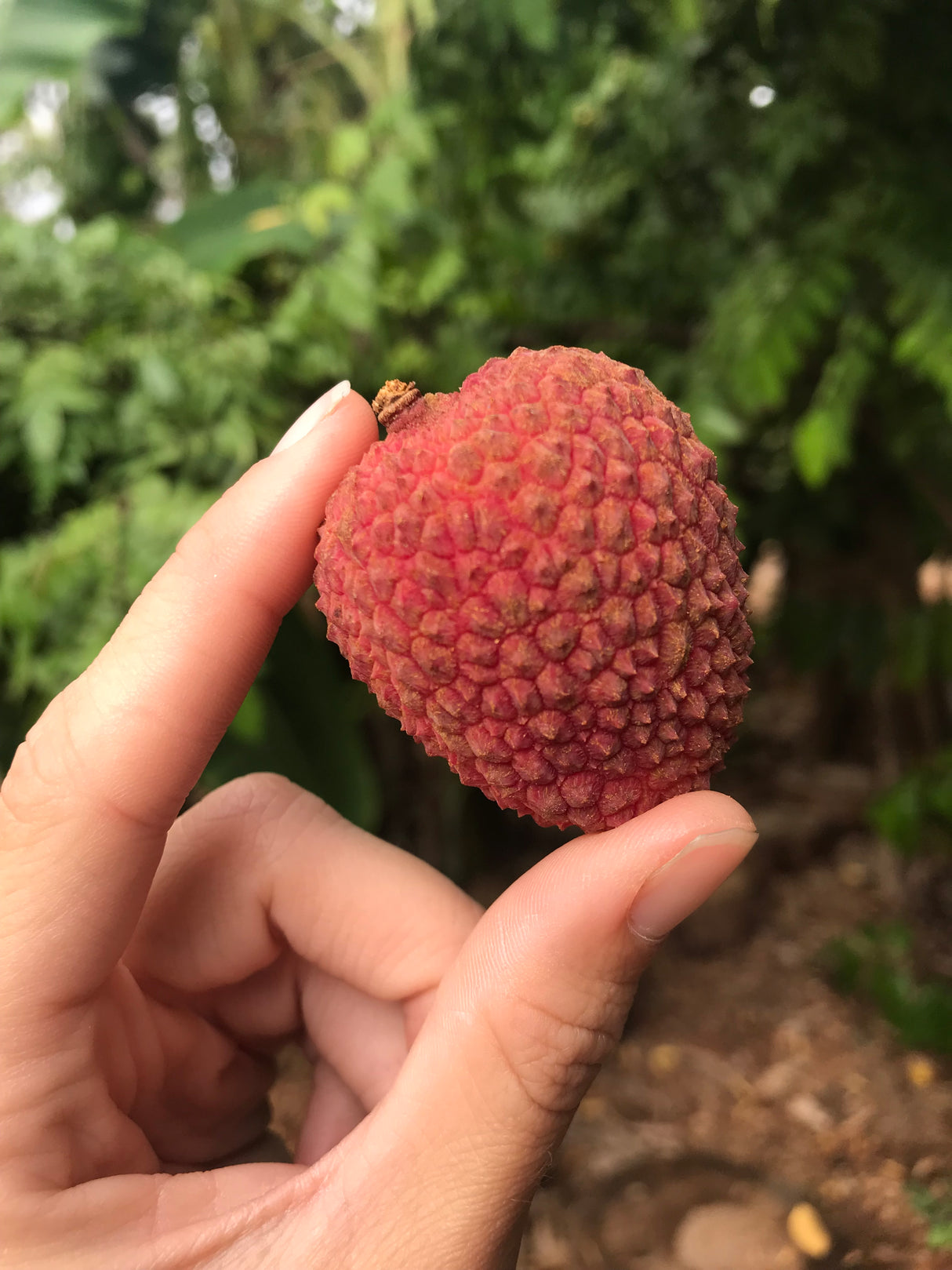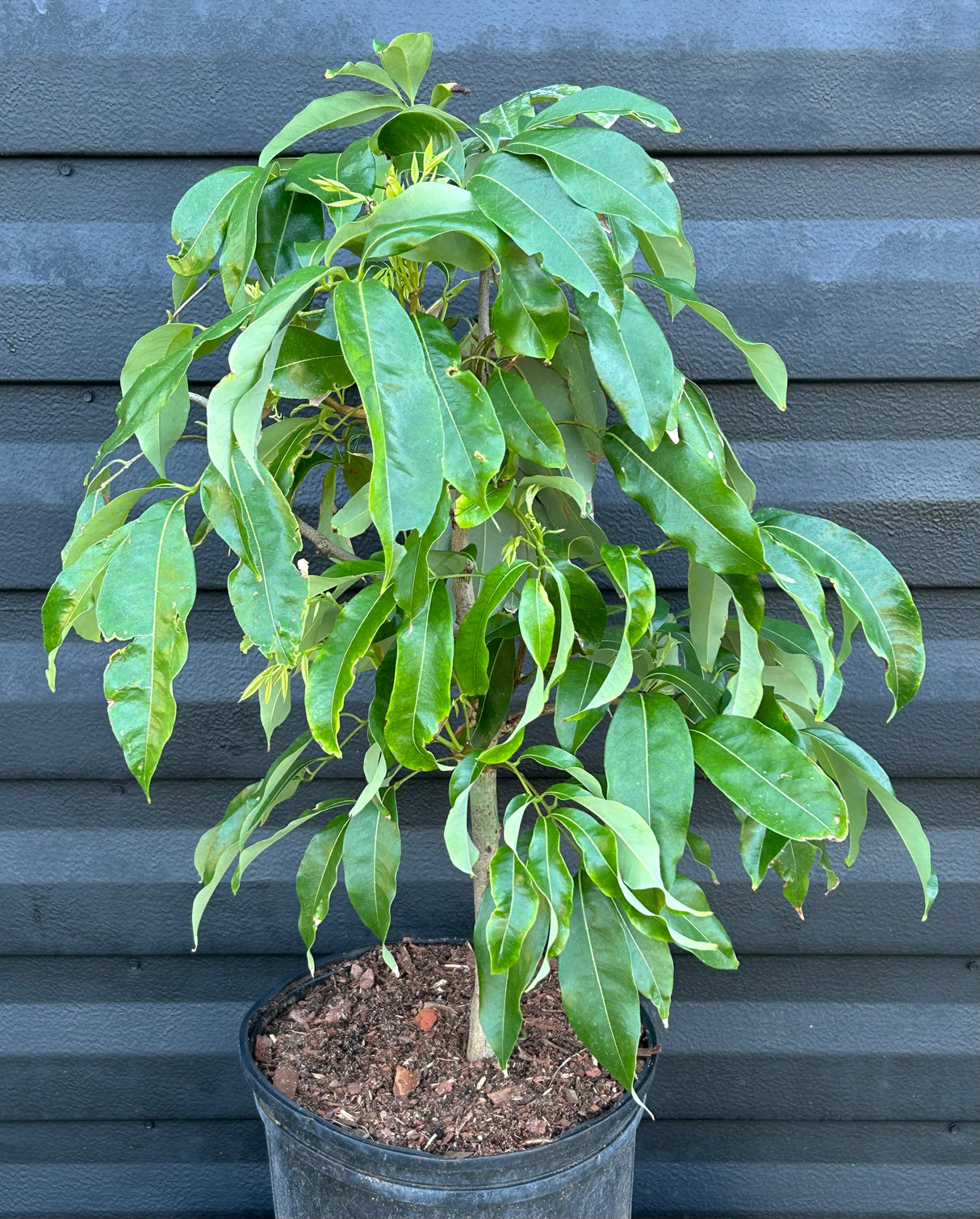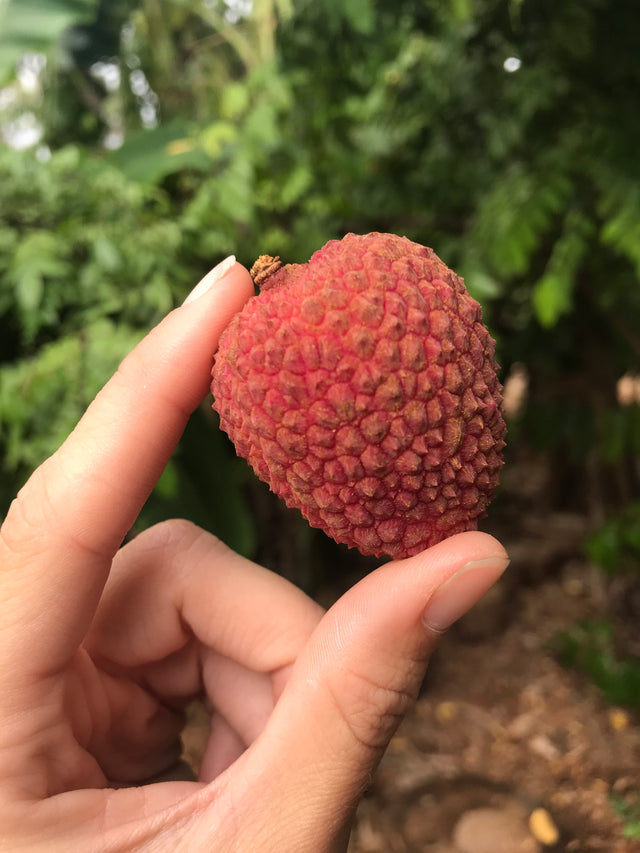Lychee Tree 'Sweetheart'
Lychee Tree 'Sweetheart' - 3 Gallon is backordered and will ship as soon as it is back in stock.
Fruit Tree Pot Size Reference Guide
Fruit Tree Pot Size Reference Guide
Display general product information or specific product information using metafields.
We sell grafted fruit trees in various sizes, ranging from young 3-gallon plants all the way up to 25-gallon and larger, mature trees.
As a general rule of thumb, here’s what you can expect from each size:
3 gallon: Will take an average of 2-3 years before harvesting your first crop. Trees are small and may be just a single stem, or just starting to develop their first branches. Typical height is between 2-4 feet.
7 gallon: Will take an average of 1–2 years to produce a crop. Branching structure has started to develop, and trunks are between ½ to 1 inch thick. Typical height is between 3-6 feet.
15 gallon: You can usually expect fruit within a year of planting, and some trees are already fruiting at this size. Branch and canopy structure has taken shape and the tree is starting to grow wider. Trunks are between 1 to 1-½ inches thick. Typical height is 5-8 feet.
25 gallon and larger: These are mature trees, and most are ready to produce fruit or have already produced. They have been pruned and shaped multiple times at this point. Trunks are about 2” thick or larger. Typical height is 6-10 ft.
PLEASE NOTE: These descriptions are generalized - Some species of fruit trees are very quick to produce, and others take longer. For example, mulberry trees can start fruiting at a very young age, even as small as a 3 gallon. Mango, avocado, or sapodilla trees will take longer. Each species grows at a different rate and will take varying lengths of time to establish, and even different cultivars can be more precocious (quick to produce) than others.
Order Pick Up/Delivery Info
Order Pick Up/Delivery Info
When you select the “Nursery Pickup” option at checkout, please allow up to 24-48 hours for your order to be prepared for pickup. Once your order is ready for pickup, we will email you to let you know that it is ready. Plant orders may be held at the nursery for up to 10 days. If orders are not picked up within this time frame, a 15% restocking fee will be charged. If you are unable to pick up your order, please contact us to request a quote for delivery.
If you prefer to have us deliver your plants, select "Ship" at checkout and choose the "Local Delivery" option. (This option will not be visible if your order is below the $300 minimum for delivery). Delivery cost for orders within 20 miles is a flat rate of $50. If your address is further than 20 miles, we will invoice you for the additional mileage at $3/mile upon fulfilling your order. Deliveries are typically scheduled on Tuesdays and Wednesdays. Please include your phone number and any delivery instructions in the order notes.
Responsibility of Care
Responsibility of Care
Return Policy
Return Policy
All sales are final at the time of payment. Please be sure that you are happy with your order before submitting. Returns or exchanges will only be made under exceptional circumstances, at our discretion, and are subject to a 15% restocking fee. Once plants have left the nursery and are no longer in our care, they cannot be returned.
Inventory Disclaimer
Inventory Disclaimer
Every day, we take great care to maintain our inventory and make real-time updates as plants come and go. Because our inventory is constantly changing, and because in-store and online purchases are being made simultaneously, it is possible for a short window to occur when an item is physically sold out, but listed as in-stock on this platform. This is rare, but in the case that it does happen, we will contact you right away and either refund the item or offer an alternative. Thank you for your understanding!
Additionally, we add new plants to the nursery on a weekly, sometimes daily basis. Check back often to see what’s in stock, and click the “Notify me when this item is available” button to get updates when your wish-list items are restocked!
Description
Description
'Sweetheart' is one of the most sought-after lychee varieties, known for its excellent fruit to seed ratio. Sometimes called a “chicken tongue” seed due to it’s small, flat shape.
_____________________________________________________________________________________________
Latin name - Litchi chinensis
Lychee trees are one of the finest choices for a backyard grower, producing dense pentacles of pink and red fruits against a backdrop of glossy, dark green leaves. Lychees are a tropical must-have with flavors reminiscent of grape, strawberry, and citrus—and in some varieties, floral notes. The slow growth and evergreen nature makes this an easy choice.
FACT: No one has ever been disappointed by eating a lychee.
Historically, lychees came on to the scene in China as early as 2000 BC where they were revered as tribute items during the Han dynasty. Lychees were so highly sought after that expedited couriers were employed to transport the fruits from the countryside to the imperial court. Some wild lychee trees still stand in Southern China today.
The uniqueness of the lychee tree continues! Lychees are considered a monotopic taxon, meaning that Lychee is the sole member of the Litchi genus. They’re also a member of the funnily-named soapberry family which includes longan, rambutan, guinep, Pitomba, and ackee.
Surprise!: There are THREE SUBSPECIES of lychee including Indochinese, Philippine, and Javanese. This determination was made based on a variety of plant-nerd factors like twig thickness, flower arrangement, and number of stamens.
Plant your lychee tree in a full sun location with very well-draining soil. Like avocado trees, lychees are not interested in standing water and should not be planted where water pools or stands. Lychees prefer acidic, sandy soils and require subtropical conditions (zones 10a+).
When pruning, leave lower branches intact to make for more manageable harvests. Harvest fruits in May, June, and July, with greatest production in June. Although solo trees produce fruits just fine, research suggests that multi-variety plantings increase yield.
Most common pests for lychee trees are Lychee Erinose Mite (LEM) which can decrease fruit production. A grass-free zone of about 2-5 feet around your lychee tree can prevent many common pests and diseases.
Lychees are commonly propagated via air layering (creating a new rooted tree right on the original tree, then clipping off). At Incredible Edible Landscapes, our lychee trees are air layered for guaranteed varietals that bear excellent fruit.
__________________________________________________________________
Size: 20’ x 50’ but can easily be pruned for manageability
Sun Requirements: Full Sun
Cold Hardy: Not cold-tolerant; Zones 10a+
Harvest Season: May through July, with peak in June
Watering requirements: Water established trees deeply once per week; withhold watering just before flowering to increase production, then increase again as fruit sets.




